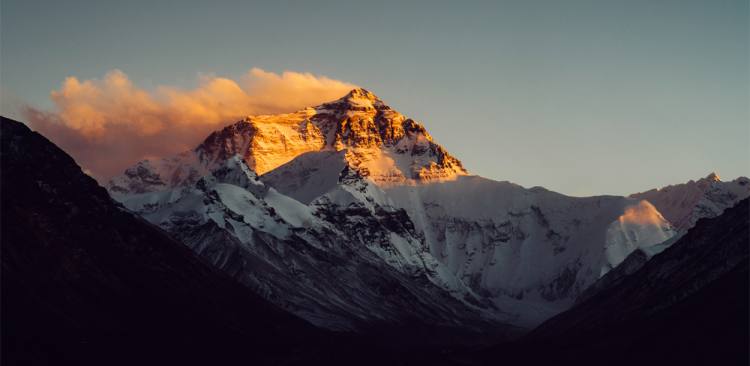How to avoid altitude sickness in Nepal Trekking
Published Date :25 Sep, 2016

The high altitude has direct effects on barometric pressures of oxygen as well as other gaseous constituents of air. The barometric pressure of atmosphere falls from sea level by appx. 50% at Everest base camp and appx. 70% at summit. Thus despite the normal proportions of gaseous constituents like oxygen, nitrogen, carbondiaoxide etc, their partial pressures decrease.
So what does it has to do with us?
To transfer oxygen from air we inspire into our blood, difference between two pressures play vital role which are- pressure of oxygen in inspired air and pressure of oxygen in blood. When partial pressure of oygen decreases in atmosphere, the difference between those pressures becomes less and oxygen is transferred less into blood.
What happens next?
Decreased level of oxygen in blood (hypoxia) leads to clinical syndromes targeting two vital organs; brain (Acute Mountain Sickness and High altitude cerebral edema) and lungs (High altitude pulmonary edema). These are common at altitudes above 3500m and at even lower altitudes in case of rapid ascent.
1. Acute Mountain Sickness (AMS): Occurs due to increased intracranial pressure due to increased blood flow to brain. People complain of headache, nausea, vomiting, tiredness, dizziness, inability to sleep etc within 6-12 hr of ascent. May occur in 40-50% of travellers above 3000m depending upon rate of ascent.
Rest and simple pain-killers subsides the symptoms in 1-3 days but may recur with further ascent. If persistent, one may need to descend. It usually responds to acetazolamide, a medication which increases breathing. May lead to cerebral edema.
2. High altitude cerebral edema: Occurs due to swelling of brain due to hypoxia and increased blood flow. People complain confusion, disorientation, lethargy, problems in vision, loss of consciousness.
Treatment is to supplement oxygen. Rapid descent is must. Oxygen therapy from oxygen bags is beneficial if descent is delayed. It is life threatening condition.
3. High altitude pulmonary edema: A life threatening condition that occurs due to swelling of lung tissues due to hypoxia within first 4 days of acsend above2500m. People complain of dry cough, difficulty in breathing in exertion and extreme tiredness initially but later cough is associated with sputum and may be blood stained. High heart rate and high breathing rate occurs even at rest.
Treatment is immediate descent and oxygen supplementation with pressurised oxygen bags.
Besides above, other health related problems may arise in individuals with medical conditions like- hypertension, diabetes, lungs disease, heart diseases, pregnancy, obesity etc.
So how can we prevent it?
Complete prevention cannot be guaranteed. However measures can be taken to decrease the occurences, especially for those trekkers who are new to trekking.
1. Avoid rapid ascent. Hurrying to make the trip short may actually shorten the trip from the midway!!
2. Above 3000m, a gradual ascend of 300m or less from previous day’s sleeping altitude is recommended. It is wise to take a day acclimatization break every appx.1000m ascend or every third day.
3. For summit trekkers, a night in intermediate altitude decreases chance of AMS in high altitude.
4. For new travellers, it is wise to participate in some endurance and cardiac exercises before travelling.
5. For the patients of known cardiac and pulmonary diseases, it is recommended to consult your physician before heading up for the hike.
6. Medical prophylaxis can be done with Acetazolamide 1-2 days before ascent and continue for 48 hrs or longer after consulting with physician.
7. For people with disease conditions: Transient rise in BP may occur in altitude so hypertensive patient should be cautious not to forget medication; asthma attacks may occur due to cold and exercise in asthmatics; obesity may increase chance of AMS at night; caution to travel above 2500m in people with sickle cell, a blood disorder.
8.Diabetics under medication should carry sweets and glucose in case of low-glucose condition. Pregnant women are generally not advised to travel above 3000m.
9. Consulting with locals is always beneficial, local herbs may exacerbate asthma and altitude sickness in susceptible individuals. And who knows, they may have their own local prophylaxis!!




